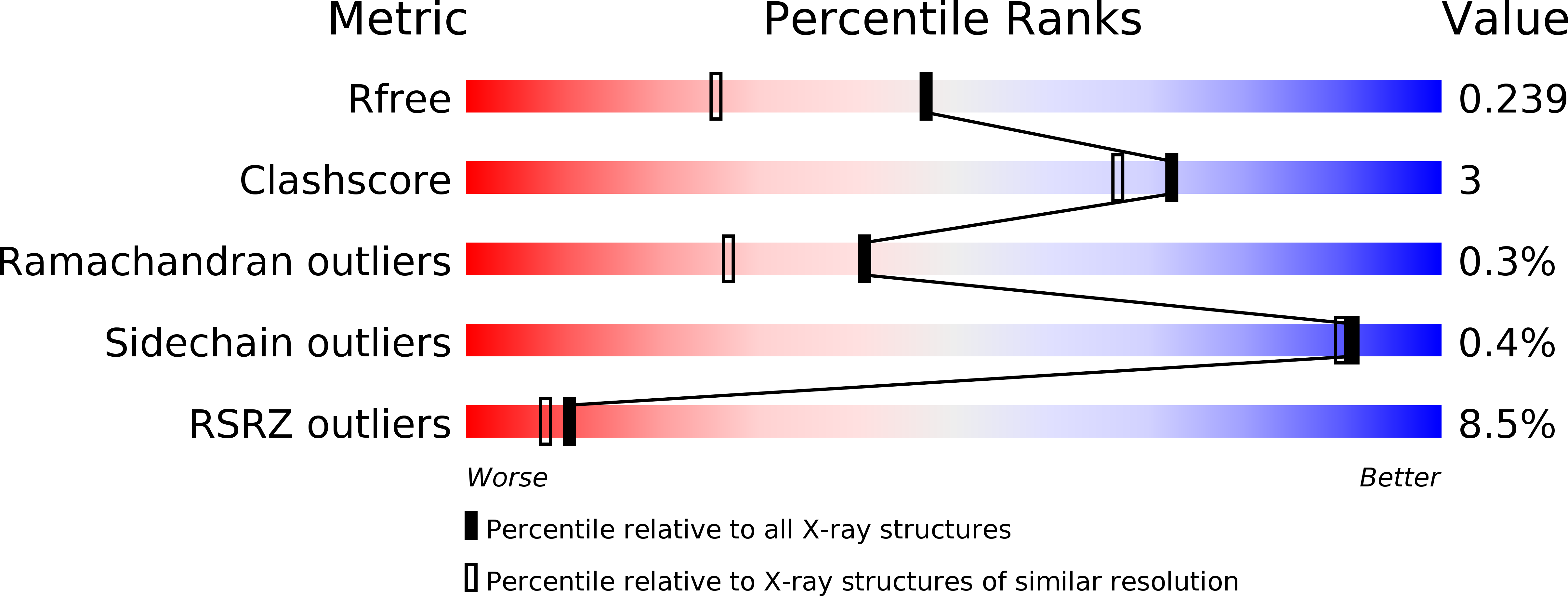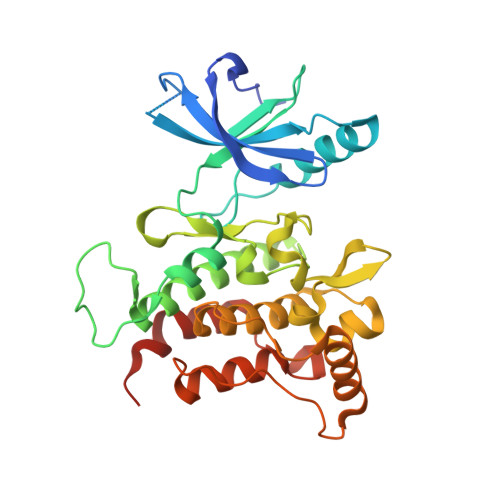DNA-Encoded Library-Derived DDR1 Inhibitor Prevents Fibrosis and Renal Function Loss in a Genetic Mouse Model of Alport Syndrome.
Richter, H., Satz, A.L., Bedoucha, M., Buettelmann, B., Petersen, A.C., Harmeier, A., Hermosilla, R., Hochstrasser, R., Burger, D., Gsell, B., Gasser, R., Huber, S., Hug, M.N., Kocer, B., Kuhn, B., Ritter, M., Rudolph, M.G., Weibel, F., Molina-David, J., Kim, J.J., Santos, J.V., Stihle, M., Georges, G.J., Bonfil, R.D., Fridman, R., Uhles, S., Moll, S., Faul, C., Fornoni, A., Prunotto, M.(2019) ACS Chem Biol 14: 37-49
- PubMed: 30452219
- DOI: https://doi.org/10.1021/acschembio.8b00866
- Primary Citation of Related Structures:
6FER, 6FEW, 6FEX, 6FIL, 6FIN, 6FIO, 6FIQ - PubMed Abstract:
The importance of Discoidin Domain Receptor 1 (DDR1) in renal fibrosis has been shown via gene knockout and use of antisense oligonucleotides; however, these techniques act via a reduction of DDR1 protein, while we prove the therapeutic potential of inhibiting DDR1 phosphorylation with a small molecule. To date, efforts to generate a selective small-molecule to specifically modulate the activity of DDR1 in an in vivo model have been unsuccessful. We performed parallel DNA encoded library screens against DDR1 and DDR2, and discovered a chemical series that is highly selective for DDR1 over DDR2. Structure-guided optimization efforts yielded the potent DDR1 inhibitor 2.45, which possesses excellent kinome selectivity (including 64-fold selectivity over DDR2 in a biochemical assay), a clean in vitro safety profile, and favorable pharmacokinetic and physicochemical properties. As desired, compound 2.45 modulates DDR1 phosphorylation in vitro as well as prevents collagen-induced activation of renal epithelial cells expressing DDR1. Compound 2.45 preserves renal function and reduces tissue damage in Col4a3 -/- mice (the preclinical mouse model of Alport syndrome) when employing a therapeutic dosing regime, indicating the real therapeutic value of selectively inhibiting DDR1 phosphorylation in vivo. Our results may have wider significance as Col4a3 -/- mice also represent a model for chronic kidney disease, a disease which affects 10% of the global population.
Organizational Affiliation:
Roche Pharma Research and Early Development, Roche Innovation Center , Basel 4070 , Switzerland.
















